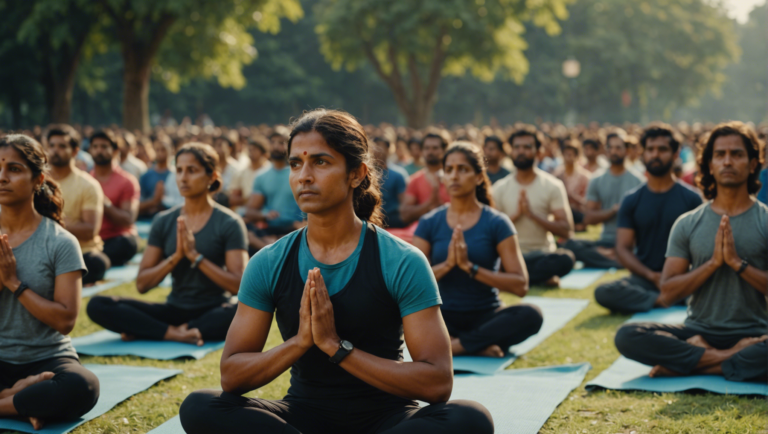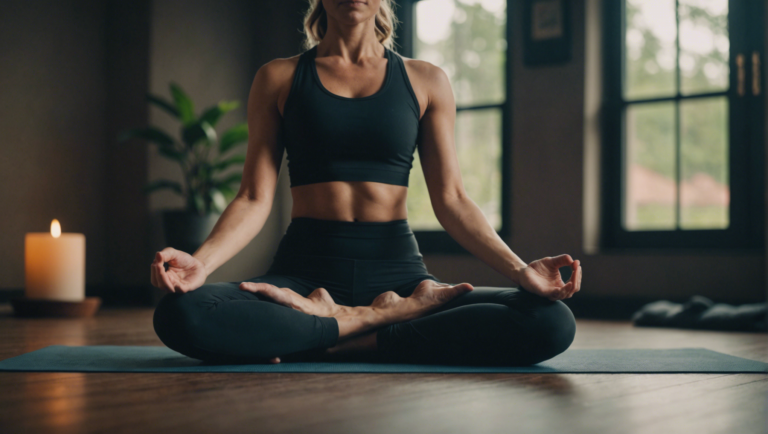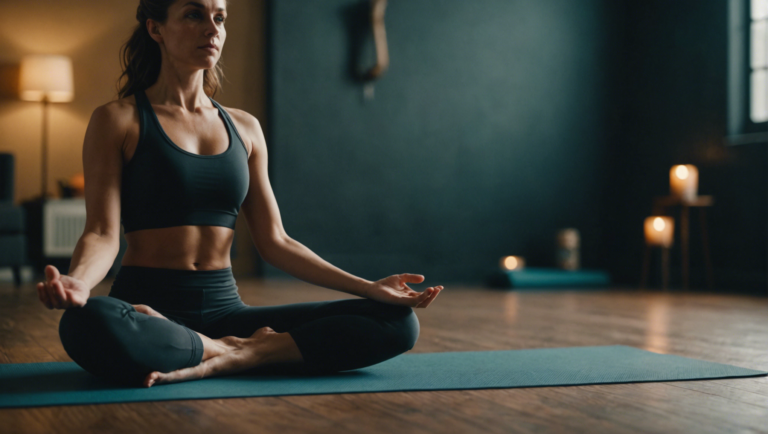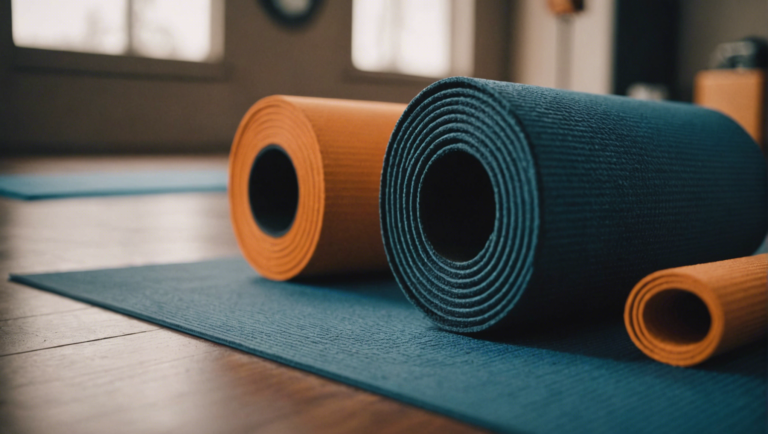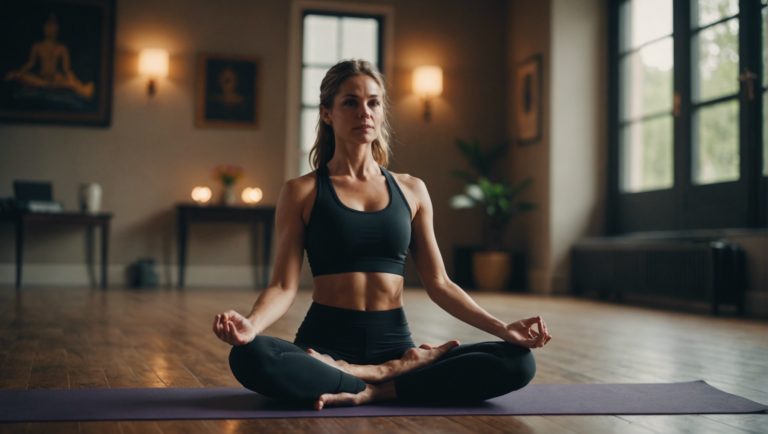Exploring The Variety: How Many Yoga Positions Are There?
The Enigmatic Number: Quantifying Yoga Poses
Yoga, an ancient practice that has traversed through centuries, embodies a plethora of poses, each with its own unique purpose and benefit. The attempt to quantify the exact number of yoga poses is akin to capturing the essence of a tradition that is constantly evolving. However, understanding the vastness and variety within the scope of yoga positions provides a fascinating insight into its inclusive and comprehensive nature.
Unveiling the Spectrum of Yoga Poses
Yoga, with its roots deeply planted in the fertile grounds of ancient India, has grown into a global phenomenon, revered not only for its physical benefits but for its profound spiritual and mental health advantages. The complexity and diversity of its poses (asanas) reflect yoga’s adaptability across different cultures, body types, and personal preferences.
The question of how many yoga positions exist is not straightforward. Traditional texts, like the Hatha Yoga Pradipika, mention around 15 poses, while later compilations suggest the existence of thousands. Contemporary yoga practices incorporate a blend of old and new, continually adapting and creating positions to suit modern needs and understandings of human anatomy.
The Traditional Roots and Evolution
Within the traditional Vedic texts, certain poses were outlined with the aim of enhancing meditation and physical health. As yoga evolved, especially with the advent of Hatha Yoga, the repertoire expanded. This expansion continued exponentially with yoga’s introduction to the West, where innovation in practice led to the development of new styles, each with its own set of poses.
The Influence of Contemporary Practices
The westernization of yoga has undoubtedly influenced the increase in the number of recognized yoga poses. Styles like Vinyasa, Power Yoga, and Yin Yoga, while differing in pace and intensity, have contributed significantly to the broad spectrum of poses practiced today. Each style introduces variations of traditional poses, adaptations for different skill levels, and entirely new poses to address specific physical or mental benefits.
The Dynamic Count of Yoga Asanas
Given the evolving nature of yoga, pinning down a precise number of poses is challenging. Estimates range from around 84 basic asanas to thousands of variations and modifications. Yoga teachers and practitioners often create new poses or modify existing ones to make them more accessible, effective, or challenging. Thus, the fluidity of yoga as a practice makes its quantification a moving target.
The Categories of Poses and Their Significance
Yoga poses are often categorized by their physical orientation or intended benefit. These categories include standing poses, seated poses, backbends, forward bends, twists, and inversions. Each category works to promote strength, flexibility, balance, and mindfulness in different ways. Understanding these categories helps practitioners navigate the vast selection of poses, tailoring their practice to their current needs and goals.
The Role of Adaptation and Innovation
Adaptation and innovation in yoga are not only about increasing the number of poses but also about making yoga inclusive. Props like blocks, straps, and cushions help make poses accessible to individuals of all ages, abilities, and body types. This inclusive approach has led to the development of specialized forms of yoga, such as Restorative Yoga and Chair Yoga, further diversifying the practice.
Embracing the Journey Through the Asanas
Exploring the variety of yoga poses is a journey that encourages self-discovery, patience, and a deepened understanding of one’s physical and mental capacities. Practitioners are encouraged to approach yoga with an open mind, respecting their limits while exploring the depth and breadth of poses available to them.
The precise number of yoga positions may remain an enigma, reflective of yoga’s dynamic and adaptive essence. The true beauty of yoga lies not in the quantification of its poses but in the exploration of its depths, guiding each individual on a unique path toward wellness and enlightenment.
Historical Journey: The Evolution of Yoga Positions
The rich tapestry of yoga is woven from threads of ancient wisdom, spiritual practices, and physical disciplines that have evolved over thousands of years. At its heart, the myriad of yoga positions or asanas that we see today is a tribute to this evolutionary journey, reflecting not only physical prowess but also a deep connection to the spiritual and mental well-being.
The Roots of Yoga: A Convergence of Tradition and Practice
Yoga’s genesis can be tracked back to the Indus-Sarasvati civilization in Northern India over 5,000 years ago. The word ‘yoga’ was first mentioned in the oldest sacred texts, the Rig Veda. The Vedas, Upanishads, Bhagavad-Gita, and other ancient texts elaborated on the philosophies and practices, laying the foundation for various yoga forms. These early documents did not specifically describe yoga postures as we know them today but stressed meditation and the cultivation of mental discipline.
The codification of yoga into a systematic practice is attributed to the sage Patanjali, who composed the Yoga Sutras around 400 CE. This seminal text described the eight limbs of yoga, with asanas or physical postures being just one component. Initially, asanas focused primarily on achieving meditative postures that could be held for long periods to aid concentration and spiritual enlightenment.
Transition and Transformation: The Development of Asanas
As yoga traditions passed through centuries, the physical aspect of yoga, particularly asanas, began to evolve. This transformation can be significantly attributed to the influence of various spiritual and ascetic traditions, including Buddhism and Jainism, which incorporated more physical practices. The medieval era marked a significant shift with the development of Hatha Yoga, a branch that emphasized physical exercises alongside breath control to prepare the body for meditation.
The Hatha Yoga Pradipika, composed by Swami Swatmarama in the 15th century, detailed around fifteen asanas. This was a departure from the predominantly meditative stance of earlier yoga practices, signaling the beginning of asanas’ evolution towards what we recognize in contemporary yoga today. It introduced postures that enhanced bodily flexibility and strength, laying the groundwork for the physical dimension of yoga to flourish.
The Modern Era: Expansion and Exploration of Asanas
The 19th and 20th centuries witnessed a significant expansion in the number and variety of yoga postures. This period saw the blending of Western gymnastics with traditional Indian practices, thanks to figures like Sri Krishnamacharya, often called the "father of modern yoga". Krishnamacharya’s teachings at the Mysore Palace became the foundation for several styles of modern yoga, from Ashtanga to Iyengar and Viniyoga, each introducing unique asanas and adaptations.
Krishnamacharya’s distinguished disciples, K. Pattabhi Jois, B.K.S. Iyengar, and T.K.V. Desikachar, were instrumental in popularizing yoga in the West. Particularly, B.K.S. Iyengar’s emphasis on alignment and the use of props has significantly influenced how asanas are practiced globally, making yoga accessible to people of all ages and health conditions.
The Present Tapestry: Diversity in Unity
Today, the number of recognized yoga positions spans into the hundreds, reflecting a rich diversity that encompasses everything from simple seated postures to complex inversions and balances. This growth mirrors the broader evolution of yoga from a meditative tradition to a comprehensive discipline that includes physical health and wellness, mental clarity, and spiritual exploration.
Modern yoga continues to adapt and evolve, with contemporary forms like Power Yoga, Bikram Yoga, and Yin Yoga contributing new dimensions to the practice. Each style introduces unique sequences and adaptations, expanding the asana library.
Yoga’s journey from the meditative stances described in ancient texts to the dynamic postures of today’s practices underscores a history of adaptation, innovation, and global exchange. The evolution of yoga positions is a testament to the enduring power of this ancient discipline, continually reshaping itself to meet the spiritual, physical, and mental needs of its practitioners across ages and cultures. As we adopt these postures, we not only partake in a physical exercise but also connect with a tradition that has flowed through centuries, offering insights into the depth of human endeavor and spiritual pursuit.
Unraveling the Complexity: Categories of Yoga Poses
Yoga, an ancient practice originating from India, has traversed borders and epochs to become a global phenomenon celebrated for its profound benefits on physical health, mental well-being, and spiritual elevation. At the heart of yoga practice are the asanas, or poses, each crafted to harmonize the body, mind, and soul. The diversity of yoga poses is as expansive as the practice itself, ranging from the simplest of postures that promote relaxation to the most intricate ones that challenge the body’s limits. Understanding the categories of yoga poses is essential for practitioners of all levels to cultivate a balanced practice.
Standing Poses
Standing poses form the foundation of yoga practice, emphasizing strength, flexibility, and stamina. These poses are pivotal for beginners as they build the necessary endurance and familiarity with yoga principles. Poses like Tadasana (Mountain Pose) and Uttanasana (Forward Bend) do not just improve posture; they also instill a sense of groundedness and are instrumental in preparing the body for more advanced practices.
Balancing Poses
Balancing poses, such as Vrksasana (Tree Pose) and Bakasana (Crane Pose), challenge the body’s equilibrium, requiring a blend of focus, strength, and poise. These poses are not just physical exercises; they are also meditative practices that promote mental clarity and concentration. By integrating balancing poses into one’s practice, individuals can enhance their core stability, coordination, and overall body awareness.
Backbends
Backbends are exhilarating poses that open up the chest, shoulders, and spine, promoting flexibility and alleviating tension in the back. Poses like Ustrasana (Camel Pose) and Bhujangasana (Cobra Pose) are transformative, fostering an invigorating energy flow that uplifts the spirit. These poses are particularly beneficial for counteracting the rigidity caused by sedentary lifestyles and for stimulating the cardiovascular system.
Inversions
Inversions such as Sirsasana (Headstand) and Adho Mukha Vrksasana (Handstand) redefine the body’s relationship with gravity, offering a fresh perspective both literally and metaphorically. These poses are not merely physical feats; they are powerful tools for rejuvenation and mental tranquility. Inversions are known to enhance circulation, boost the immune system, and foster a sense of achievement and confidence.
Forward Bends
Forward bends, including Paschimottanasana (Seated Forward Bend) and Janu Sirsasana (Head-to-Knee Pose), promote flexibility in the hamstrings and back, while soothing the nervous system. These introspective poses encourage a calming, inward focus, making them excellent for relieving stress and anxiety. By incorporating forward bends into a regular practice, practitioners can enjoy deeper relaxation and improved digestion.
Twists
Twists such as Parivrtta Trikonasana (Revolved Triangle Pose) and Ardha Matsyendrasana (Half Lord of the Fishes Pose) offer a unique set of benefits, including detoxification and improved spinal mobility. These poses facilitate the release of tension around the spine, shoulders, and neck, while promoting the healthy function of internal organs through the gentle compression and massaging action.
Restorative Poses
Restorative poses like Savasana (Corpse Pose) and Balasana (Child’s Pose) are crucial for integrating the benefits of a vigorous yoga session. These poses encourage a state of relaxation and surrender, allowing the body to assimilate the energy and refinement brought about by the practice. Restorative poses are the key to achieving balance, inviting a deep sense of peace and well-being.
The categorization of yoga poses into distinct groups serves as a roadmap for developing a comprehensive and balanced yoga practice. It ensures that practitioners can tailor their journey to address specific physical, mental, and spiritual needs. As individuals evolve in their practice, their exploration of these categories will deepen, revealing the infinite layers and subtleties of yoga. Far from being a static discipline, yoga is a dynamic journey of discovery, where each pose offers a universe of insights waiting to be uncovered.
The Impact of Practice: Benefits of Diverse Yoga Asanas
The Rich Tapestry of Yoga and Its Multifaceted Benefits
Yoga, a practice rooted in ancient Indian philosophy, extends far beyond mere physical exercise. It is a holistic approach to well-being, encompassing mental, emotional, and spiritual wellness. The diversity of yoga asanas (positions) is not only a testament to the adaptability and inclusiveness of the practice but also highlights its comprehensive approach to health. Through the lens of diverse yoga asanas, we delve into the profound impact consistent practice can have on an individual’s life.
Understanding the Spectrum of Yoga Asanas
Yoga asanas range from simple poses like Tadasana (Mountain Pose) to more complex forms such as Sirsasana (Headstand). Each asana targets different areas of the body, contributing to overall flexibility, stamina, and strength. But the benefits extend far beyond the physical. Asanas like Padmasana (Lotus Position) and Savasana (Corpse Pose) are pivotal in enhancing mental focus and inducing relaxation. The versatility of yoga poses ensures that individuals at any level of proficiency can engage with the practice and derive significant benefits.
Physical Health: A Foundation for Wellness
Regular engagement with a variety of yoga poses significantly impacts physical health. Increased flexibility, improved muscle tone, and enhanced cardiovascular health are among the most touted benefits. For instance, Vinyasa flows stimulate the heart, promoting healthy circulation, while balancing poses like Vrikshasana (Tree Pose) improve coordination and stability. Furthermore, yoga’s attention to breath control and posture can alleviate chronic pain, particularly in the back and neck, offering a non-invasive alternative to managing discomfort.
Mental Clarity and Emotional Stability
The practice of diverse yoga asanas also addresses the mind-body connection, fostering a state of mental clarity and emotional stability that is often elusive in the fast-paced modern world. Asanas that require concentration and balance, such as Garudasana (Eagle Pose), sharpen focus and cultivate mindfulness. This increased awareness extends beyond the mat, enhancing one’s ability to remain present and centered in the face of life’s challenges. Furthermore, the stress-relieving qualities of yoga are a natural antidote to anxiety and depression, with poses like Uttanasana (Standing Forward Bend) known to soothe the nervous system.
Spiritual Connection and Self-Realization
Perhaps one of the most profound benefits of practicing a wide range of yoga asanas is the opportunity for spiritual growth and self-realization. Poses that incorporate meditation or chant, such as Siddhasana (Accomplished Pose), invite practitioners to explore the depths of their being, fostering a sense of connection to something greater than themselves. This spiritual journey is deeply personal, with each asana offering a unique path to inner peace and fulfillment.
Navigating the Journey with Expert Guidance
Embarking on a yoga practice enriched by the diversity of asanas is a journey of discovery—one best navigated with expert guidance. Qualified yoga instructors can provide personalized recommendations, ensuring that the selection of poses aligns with individual health goals and limitations. This tailored approach maximizes the benefits of the practice, making yoga an accessible and rewarding experience for everyone.
A Commitment to Lifelong Well-Being
The practice of diverse yoga asanas is more than a physical regimen; it is a commitment to lifelong well-being. Through consistent practice, individuals can achieve a balanced state of health that encompasses body, mind, and spirit. The variety within yoga ensures that this ancient art remains relevant and beneficial in the contemporary world, inviting practitioners of all ages and walks of life to explore its depths.
In essence, the impact of practicing diverse yoga asanas is multifaceted, offering tangible improvements in physical health, mental clarity, emotional stability, and spiritual awareness. This holistic approach to wellness embodies the essence of yoga, making it a valuable practice for those seeking a well-rounded approach to health and happiness.
Bridging Tradition and Modernity: The Future of Yoga Practices
Yoga, an ancient practice rooted in over 5,000 years of Indian philosophy, has evolved tremendously from its origins. Today, it stands at the crossroads of tradition and modernity, continuing to grow in popularity while adapting to the needs of contemporary practitioners. This evolution raises important questions about the future of yoga practices, how they might continue to develop, and what this means for both newcomers and seasoned yogis.
The Expansion of Yoga Styles
Originally, yoga was a spiritual practice with the aim of uniting the mind, body, and spirit. Over centuries, it has branched into various styles, each with its unique approach but maintaining the core essence of the original practice. Styles such as Hatha, Vinyasa, Ashtanga, and Kundalini cater to different preferences and physical capabilities, demonstrating yoga’s versatility and adaptability.
The advent of modern yoga styles, including Power Yoga and Bikram Yoga, marks a significant shift towards more physically demanding practices. These styles cater to the contemporary seeker’s desire for fitness, challenging their strength, flexibility, and stamina. This diversification enriches the yoga tradition, offering multiple paths for exploration and self-discovery.
Technology’s Role in Yoga’s Evolution
The digital age has significantly impacted yoga’s transmission and practice. Online platforms and social media have democratized access to yoga, enabling millions worldwide to explore its benefits from their homes. Live-streamed classes and online workshops have become the norm, especially during times when attending a physical studio is not possible.
Technology also offers an opportunity to deepen one’s practice through apps that track progress, suggest routines, and provide guided meditations. However, this digital shift raises questions about maintaining the authenticity and intentionality of traditional yoga amidst the convenience of technology.
Emerging Focus on Mental Well-being
Modern yoga practices increasingly emphasize mental health and emotional well-being, reflecting a broader societal awareness of these issues. Yoga’s holistic approach, combining physical postures with breath work and meditation, offers a powerful tool for managing stress, anxiety, and depression.
This wellness-oriented approach to yoga encourages a deeper integration of its practices into daily life, beyond the mat. It prompts a reevaluation of yoga not just as exercise but as a comprehensive lifestyle that cultivates physical health, mental clarity, and spiritual growth.
Adaptation to Diverse Needs and Communities
Yoga’s future lies in its ability to adapt and be inclusive of diverse populations. There is a growing movement towards making yoga accessible to everyone, regardless of age, body type, disability, or economic status. Adaptive yoga classes, tailored to the needs of individuals with specific health conditions or disabilities, are becoming more common.
Furthermore, the yoga community is increasingly acknowledging the need for cultural sensitivity and inclusivity. This includes recognizing yoga’s roots and respecting the cultural traditions from which it originates while making it relevant and accessible to a global audience.
The Path Ahead: Sustaining the Essence of Yoga
As yoga continues to evolve, a key challenge will be balancing innovation with the preservation of its core philosophy and values. The essence of yoga as a spiritual and holistic practice should remain at the heart of all its forms, even as it adapts to meet the changing needs of modern practitioners.
Educators and practitioners have a critical role in this, ensuring that as yoga transforms, it retains its depth and integrity. This involves fostering an environment of lifelong learning, where the history and philosophy of yoga are taught alongside its physical aspects, grounding contemporary practices in a rich traditional context.
The future of yoga practices is bright, promising a continued journey of growth, adaptation, and discovery. By bridging tradition and modernity, yoga can sustain its relevance and continue to offer its profound benefits to all who embark on its path, keeping the timeless essence of this ancient practice alive in the modern world.
Conclusion
Exploring the enigmatic world of yoga unveils a practice rich in heritage, variety, and profound health benefits. The attempt to quantify yoga poses reveals more than just a number; it uncovers an intricate tapestry of physical discipline that transcends centuries, cultures, and personal boundaries. Each posture, or asana, carries with it a story of origin, a purpose that has evolved yet remains deeply rooted in the historical journey of yoga from ancient traditions to contemporary practice. This voyage through time has seen yoga positions adapt, grow, and diversify, reflecting the changing needs and insights of practitioners across ages.
The categorization of yoga poses into various schools and styles does not just serve to organize or simplify the practice; it is a testament to the expansive potential of yoga to cater to different physical abilities, preferences, and objectives. These categories, ranging from the restorative and gentle forms to the more vigorous and physically demanding styles, embrace the complexity of human physiology and psychology. This intricate classification enables individuals to tailor their practice to personal goals, be they for physical health, mental clarity, spiritual depth, or a harmonious balance of the three.
More than just a physical regimen, the diverse array of yoga asanas offers a spectrum of benefits that underscore the impact of practice on health and well-being. Each pose, from the simplest to the most complex, is a building block in a holistic system designed to promote balance, flexibility, strength, and mindfulness. The benefits extend beyond the physical form, touching upon mental health through stress reduction, enhanced concentration, and an overall sense of peace and well-being. This holistic impact underscores the profound interconnection between body and mind, a cornerstone of yoga philosophy.
As we bridge tradition and modernity, the future of yoga practices looks both vibrant and inclusive. Yoga has shown remarkable resilience and adaptability, blossoming in the digital age with online classes and virtual communities coming to the fore alongside traditional studios and ashrams. The fusion of ancient wisdom with the conveniences of modern technology heralds an era where yoga is more accessible and varied than ever, inviting an even wider audience to explore its depths. This evolution reflects a growing global recognition of the value of mindfulness, physical health, and spiritual connection in today’s fast-paced world.
The exploration of how many yoga positions are there becomes a journey into the heart of yoga itself. It is a quest that challenges us to look beyond numbers and delve into the essence of yoga – a practice that is as diverse and dynamic as the individuals it serves. As we stand at the intersection of tradition and modernity, the future of yoga promises to be as enriching and varied as its past. Engaging with yoga’s myriad poses, each of us can find a path that resonates, a practice that nourishes body, mind, and soul in our unique journey towards balance and wellness.
Thus, the richness of yoga lies not in the ability to quantify its positions but in appreciating the depth, diversity, and adaptability of the practice. As we embrace yoga in all its forms, we tap into a wellspring of holistic health benefits that have the power to transform lives. The legacy of yoga, with its historical depth and future potential, invites us to explore, experiment, and experience the myriad ways it can enrich our lives. In doing so, we ensure that the practice continues to evolve, bridging the ancient and the modern, in ways that remain relevant, inclusive, and beneficial for all.

